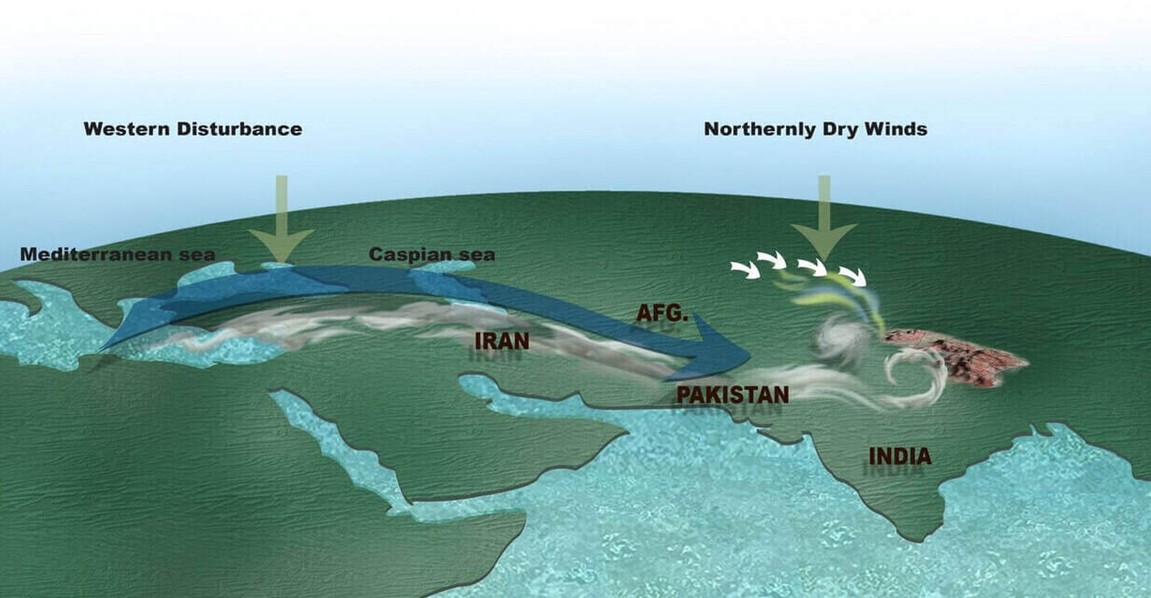Why in the News?
Heavy rainfall and strong winds disrupted life in Delhi due to a fresh splash of Western Disturbances over North India.

What are Western Disturbances?
- Western Disturbances are extra-tropical weather systems that originate near the Mediterranean region.
- They carry moisture from the Mediterranean Sea, Black Sea, Caspian Sea, and Arabian Sea.
- These disturbances are embedded within the subtropical westerly jet stream, a fast-moving air current in the upper atmosphere.
- They bring rain, snow, and fog, especially from December to March, as they encounter the Himalayas, causing rainfall in the plains and snowfall at higher altitudes.
- They are responsible for most of the winter and pre-monsoon rainfall in Northwest India and are critical for rabi crops like wheat.
Recent Changes in its Pattern:
- Recent observations show an increase in frequency, particularly from late January onwards, with disturbances now occurring outside the winter season.
- These disturbances have been observed even in May, June, and July, where they were once rare.
- The geographic spread of these disturbances is widening, affecting larger parts of North and Northwest India.
- Reasons behind:
- The strengthening of the subtropical westerly jet stream, likely influenced by rising global temperatures, is a key factor.
- The delayed retreat of the jet stream is affecting the timing of the summer monsoon, leading to overlapping weather patterns.
- The warming of the Arabian Sea (by 1.2°C to 1.4°C over recent decades) is increasing moisture, intensifying rainfall.
| [UPSC 2015] Consider the following statements:
1. The winds which blow between 30° N and 60° S latitudes throughout the year are known as westerlies. 2. The moist air masses that cause winter rains in North-Western region of India are part of westerlies. Which of the statements given above is/are correct? Options: (a) 1 only (b) 2 only * (c) Both 1 and 2 (d) Neither 1 nor 2 |
Get an IAS/IPS ranker as your 1: 1 personal mentor for UPSC 2024

